Yes, it’s hot out there. Parts of the garden show the stress of summer heat, and I curse my words from a few months ago pleading for a period without rain. Now, scattered afternoon showers disappear or veer at the last moment to avoid the garden. But, while a few spots show the wear of summer, there’s still plenty of color. Fortunately, not only brown.
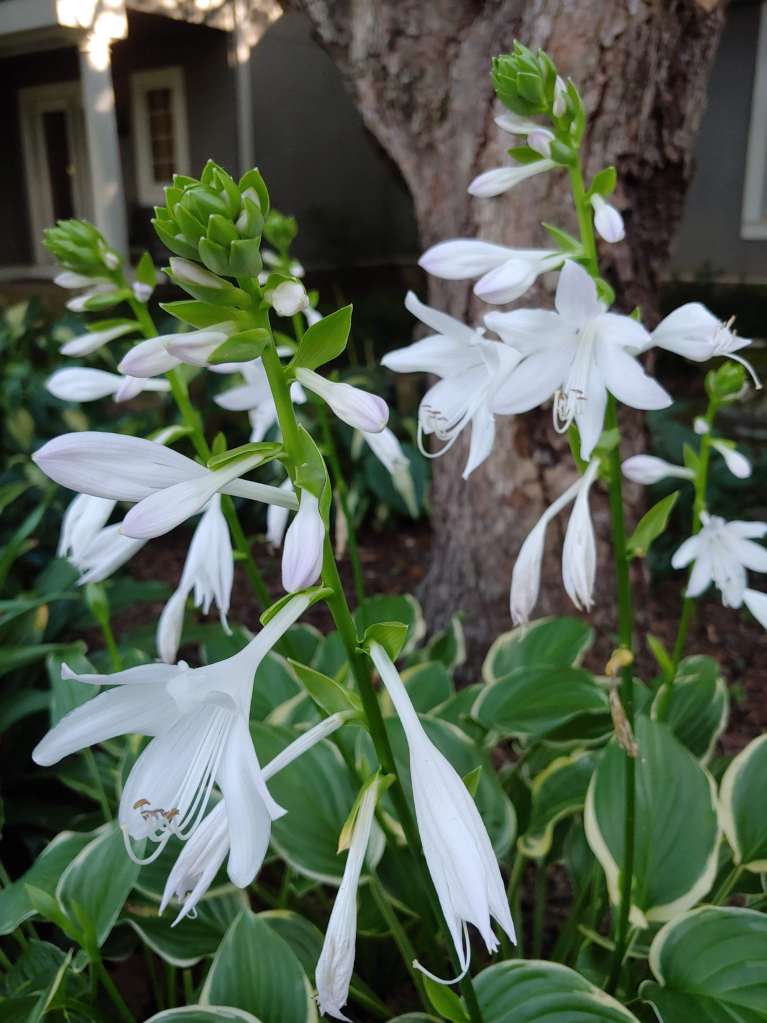
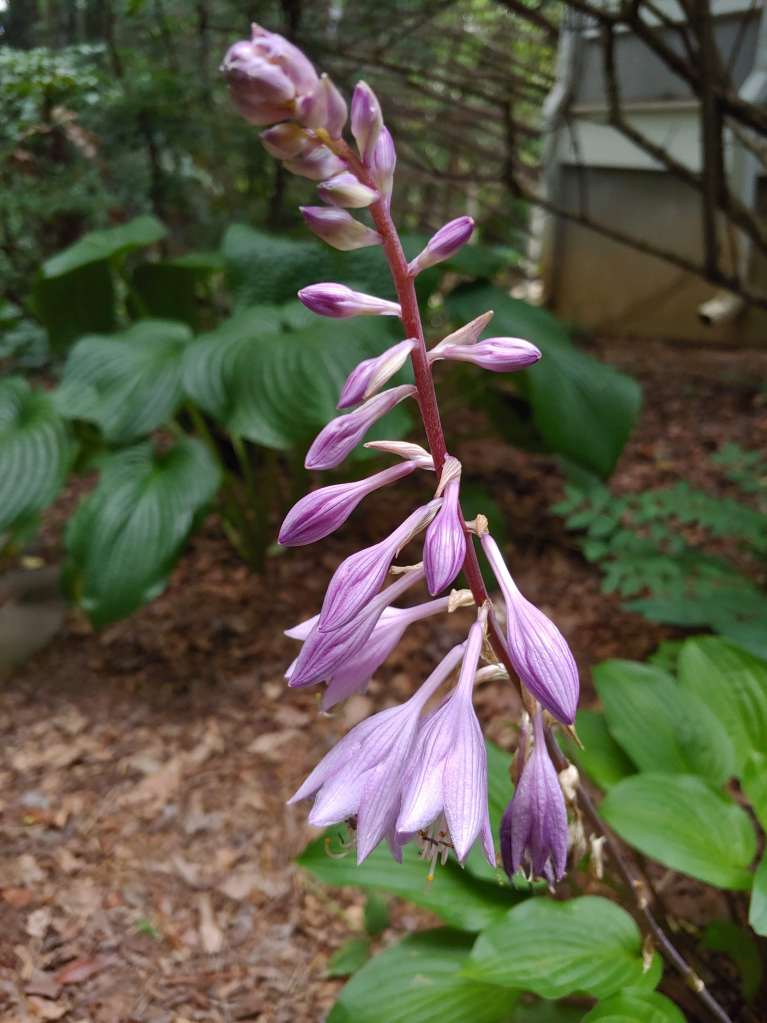
With flowers or not, and the small, white, satellite shaped blooms are barely significant, ‘Sun King’ aralia (Aralia cordata ‘Sun King’, below) is a bright light in the shady garden. Similar to other shade lovers, ‘Sun King’ grows best with some sun, but too much fries the yellow leaves, so it’s best to err slightly on too little rather than too much. Also, ‘Sun King’ grows as large as a medium sized shrub, so it won’t work to plug into every small opening. Certainly, it will be noticed.
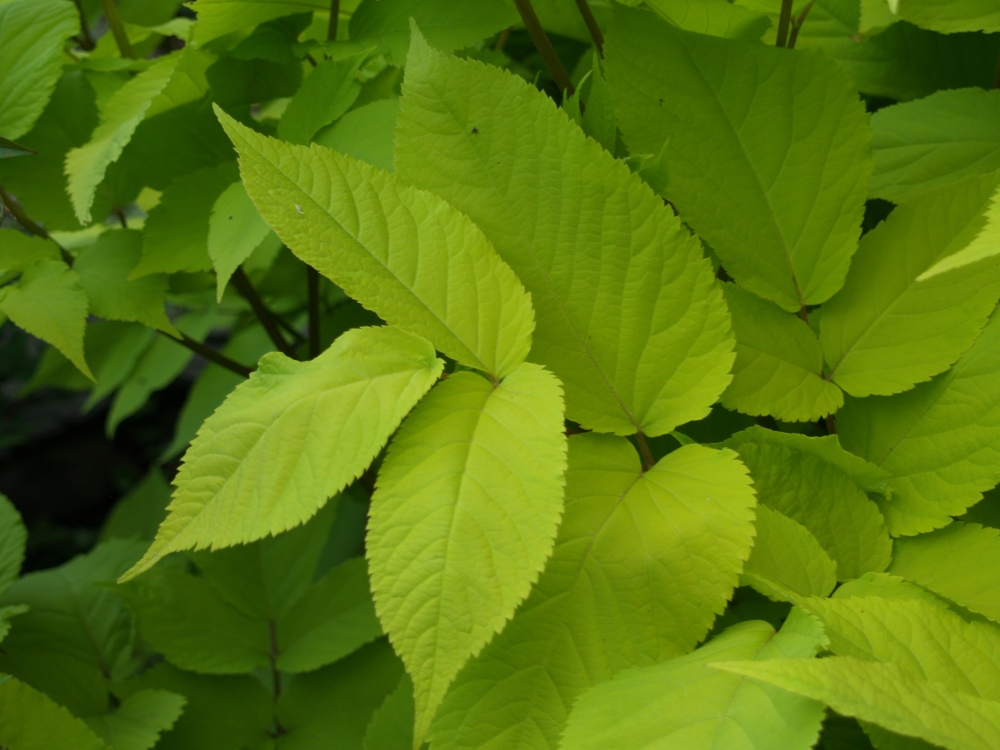
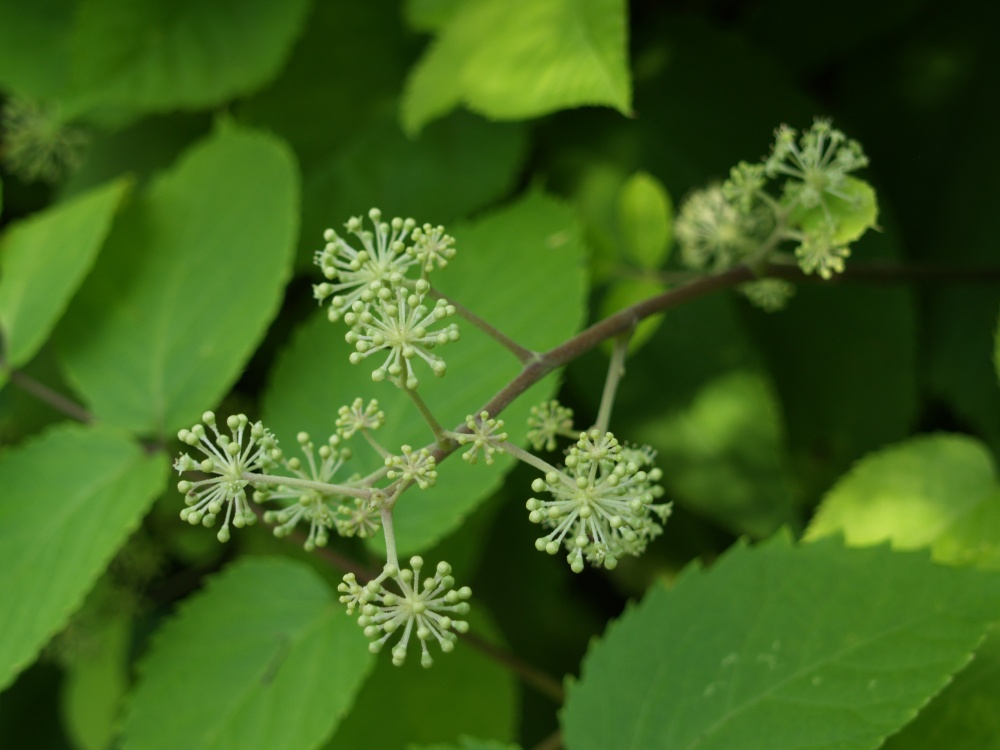
The flowering of toad lilies (Tricyrtis, below) is just getting started, and several that begin to bloom later in September will end with autumn’s first heavy frost. Interesting flowers are not much of a show from a distance, so toad lilies are best suited for the gardener who gets out to see blooms close up. Large carpenter and bumblebees are frequent visitors, and are often seen “robbing” nectar by biting through the underside of flowers.
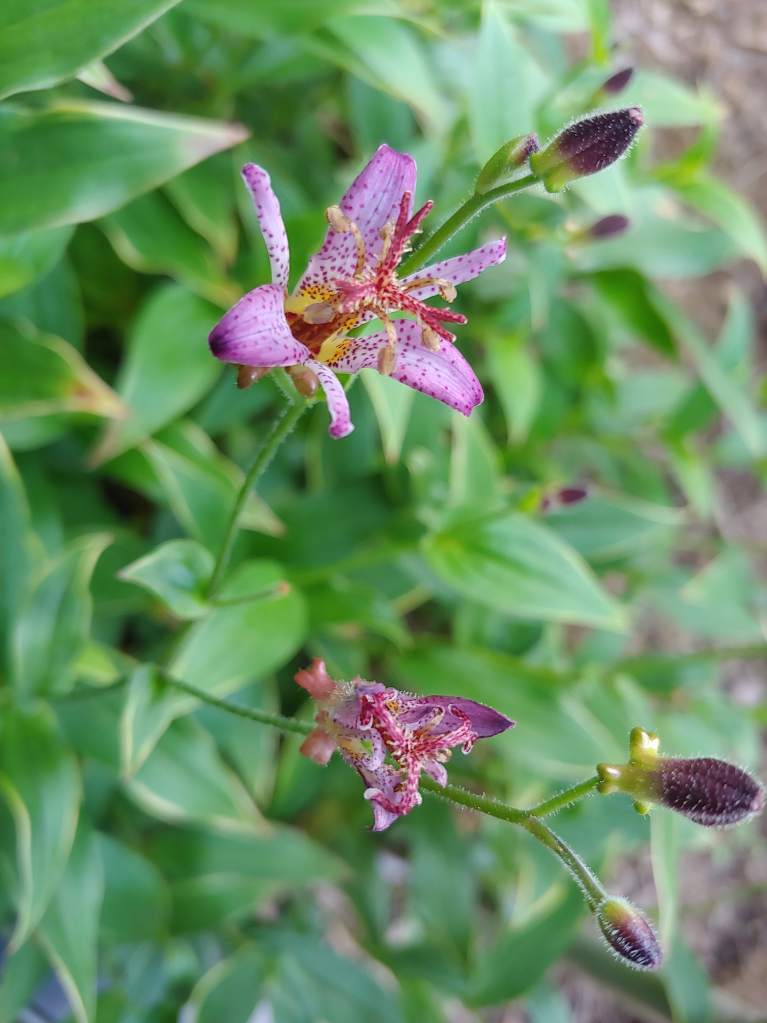
A Colorama Scarlet crapemyrtle (Lagerstroemia) was planted as a trial in early spring in the area vacated by one of two Japanese maples that failed to survive last year’s flooding rains. This joins three large crapemyrtles planted twenty years ago, when I still questioned their winter hardiness, and a shrub form (Cherry Dazzle, below) that has grown taller and wider than expected so that it is regularly singed by burning debris in the firepit. Scarlet displays uncommon vigor for a red crapemyrtle, and its blooms are the deepest red I’ve seen.
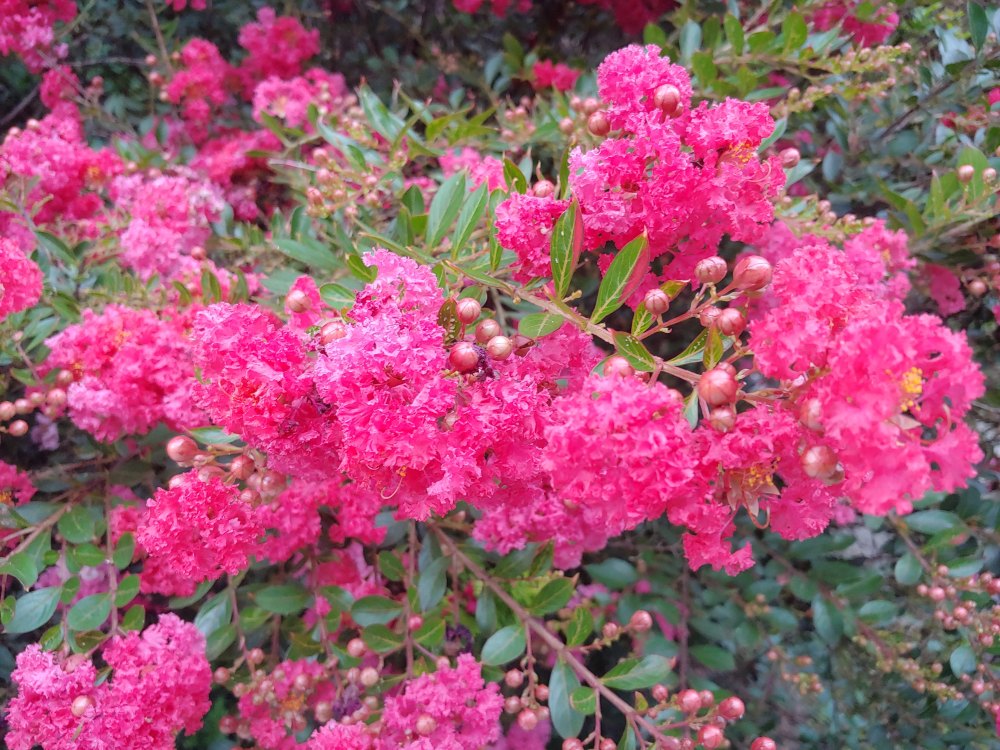
A few teaser blooms on ‘Worcester Gold’ blue mist shrubs (Caryopteris x clandonensis ‘Worcester Gold’, below) faded several weeks ago, but all are flowering again this third week of August. The yellow foliage of ‘Worcester Gold’ fades slightly in part sun, and of course more in full sun. This does not effect flowering, with cool, sky blue blooms that seem out of place in the summer heat.
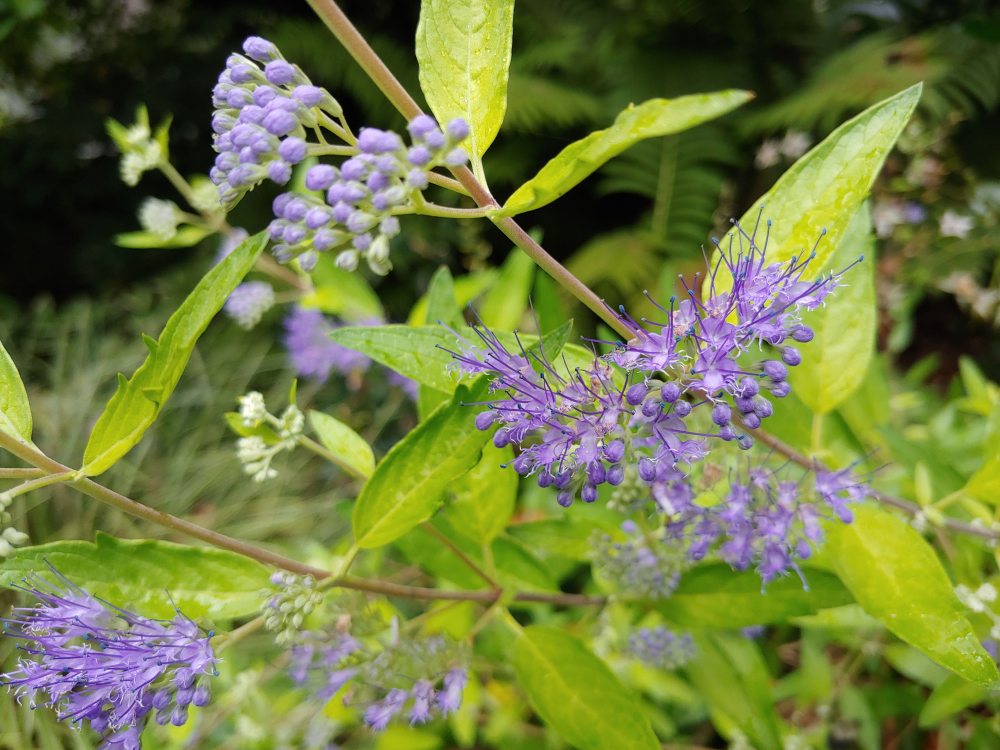
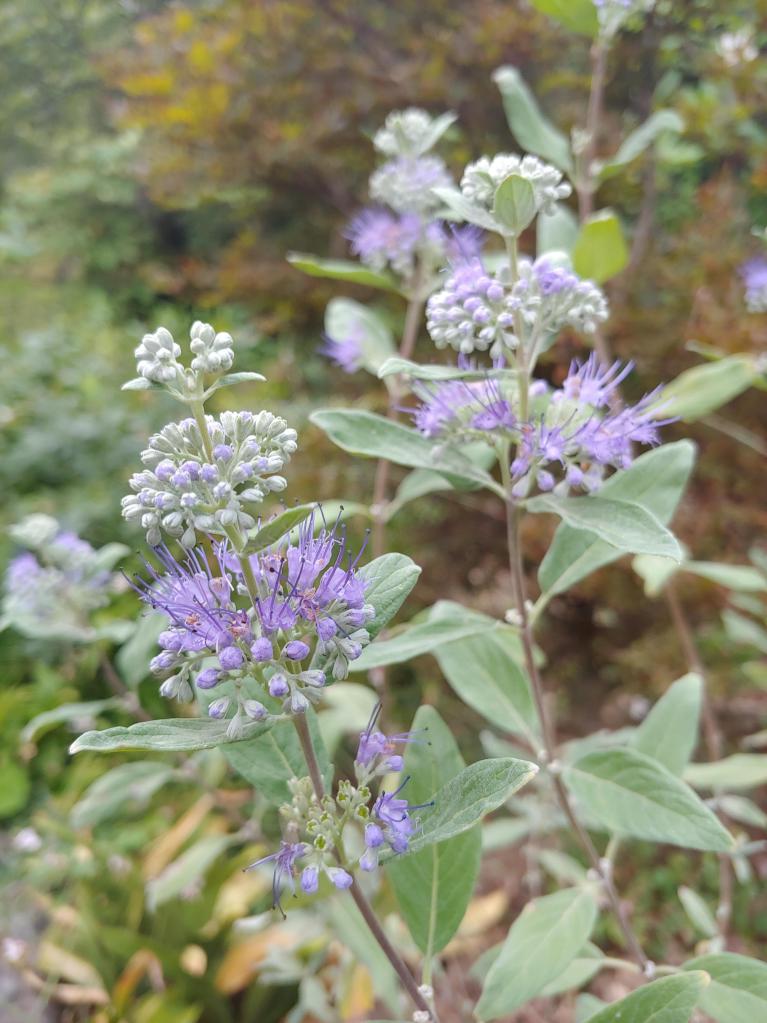

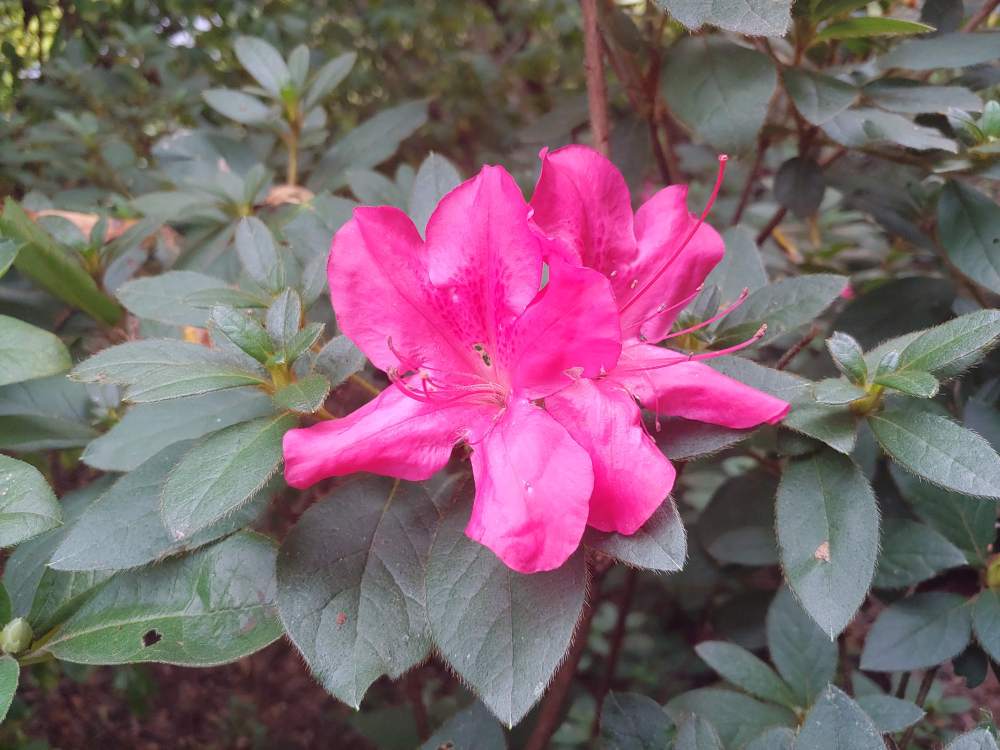
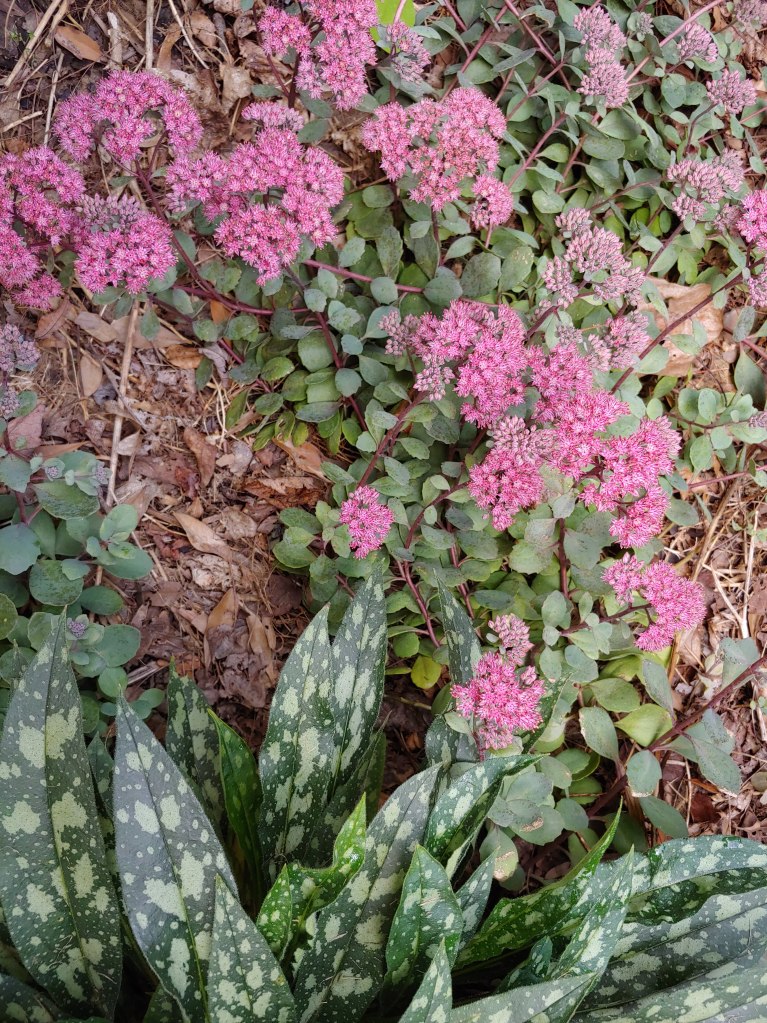

Dave, always spectacular …. thank you for sharing! Happy Gardening.
Does the aralia bloom smell objectionable? The Japanese aralia is pollinated by flies, so smells like what flies like, but does not have a strong fragrance.
My sense of smell is severely lacking, but I don’t smell anything on Aralia cordata. The flowers of Fatsia japonica that you refer to are very similar in appearance to Aralia cordata. I’ve grown Spider’s Web fatsia two years and through one winter with protection, but have had no flowers so far. I grow a few Amorphophallus and relatives that are pollinated by flies, and these have a reputation for stinking in bloom, but I can’t smell a thing
That could be a good thing.
To me, Fatsia japonica does not smell too badly, but I cut the flowers off anyway. Amorphophallus can get really nasty. My colleague down south got one in the early 1990s, and would not stop bragging about it, . . . until it bloomed.
I can’t smell anything, but the flowers are very odd.
Hello Dave,
Going into the second summer, how is the Scarlet Crape Myrtle holding up. How is it’s “Uncommon Vigor” turning out. I am thinking of adding 1 or 2 to my garden this year.
Thanks,
Chris
Of course, crape myrtles haven’t leafed yet, but Scarlet has grown quickly. I expect it will again this year.